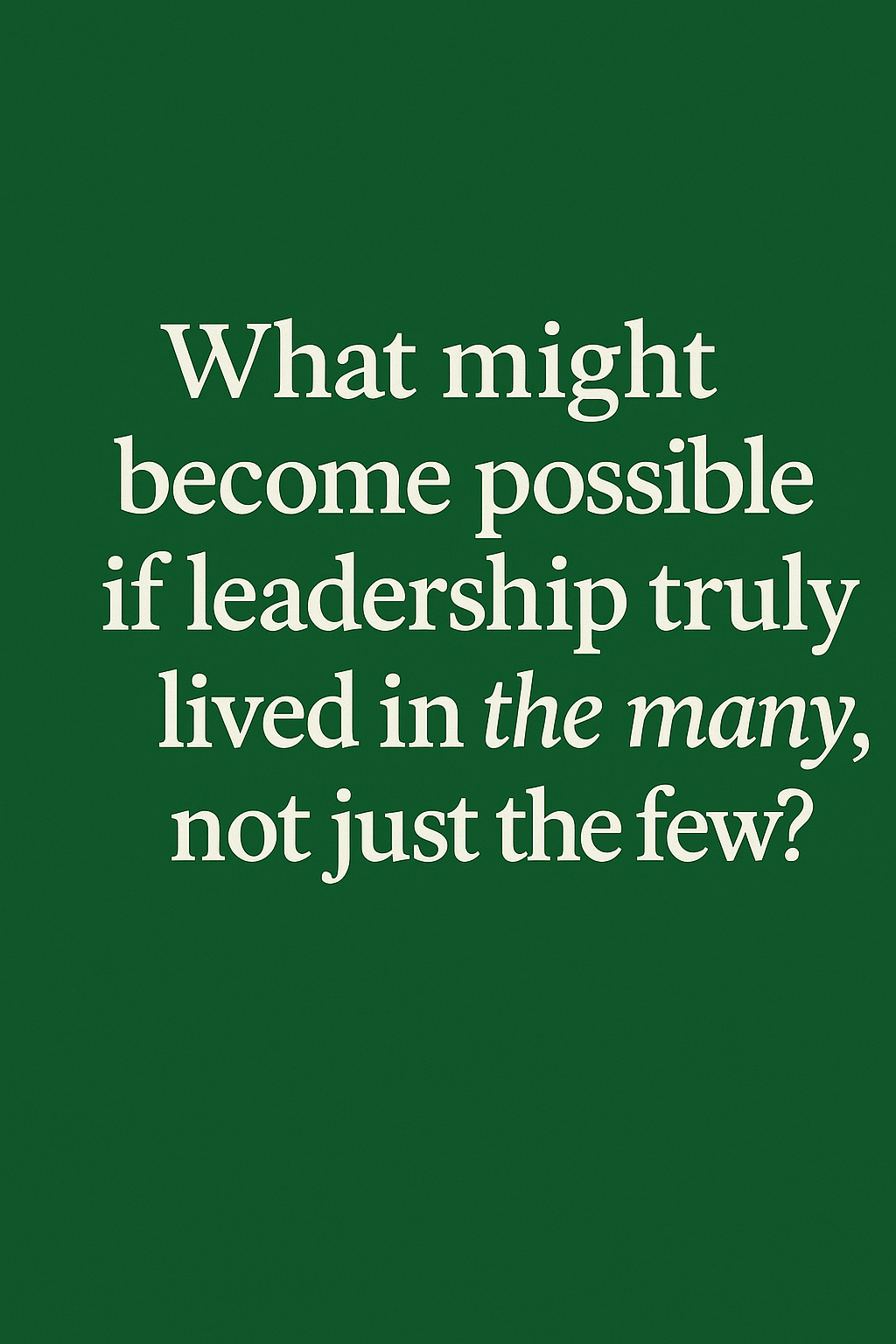Alongside mindsets and behaviours, leadership is shaped by the systems we design, the habits were reinforce, and the signals we send about who leads and how.
Culture lives in the everyday; in our routines, processes, and shared understandings of what’s valued. If we want leadership to be a shared capacity, we need to intentionally shape both the culture and the systems that support it.
In this final blog of our Scaling Leadership – From the Few to the Many series, we explore how thoughtful design can help leadership take root not just in individuals, but across the organisation.
Designing Leadership at Scale
Designing for scale means rethinking not just who leads, but how leadership is made possible. These three design levers can help leadership grow in more intentional and sustainable ways.
Design for Trust, Not Control
Structure reflects what we value. When decision-making, ownership and resources are held by a few, we communicate that leadership is exclusive. When they are distributed intentionally, we expand leadership capacity.
You Might Want To Try:
- Distributing and clarifying decision-making using frameworks like RACI
- Inviting mid-level leaders or cross-functional teams to sponsor strategic initiatives
- Rotating who chairs meetings, sets agendas, or leads discussions
- Embedding stretch in every role by asking “Where’s the next edge of growth here?”
- Delegating access to small discretionary budgets or tools to test ideas
Shift the Conditions, Not Just the Expectations
When someone holds back from stepping into leadership, it’s easy to assume they lack confidence or initiative. Yet more often, it’s the environment that shapes their response. Unclear roles, unspoken expectations or a culture that rewards compliance over curiosity can quietly constrain contribution.
As leaders, part of our role is to tune into the system; to notice the patterns, norms and structures that shape the unspoken culture and influence what feels safe or expected.
Take a Moment to Consider:
- What patterns, norms or structures might be limiting contribution?
- Where might people need more clarity or permission to step forward?
- How might the current design unintentionally dampen leadership?

The question isn’t only “Why aren’t they stepping up?” rather “What signals might they be receiving about whether it’s safe or expected to lead here?”
Recognise the Many, Not Just the Few
When recognition focuses on individual brilliance, we reinforce the lone-leader narrative and the idea that leadership belongs to a few standout performers. While celebrating individual contributions has its place, it’s just as important to acknowledge the collective effort and invisible work that makes leadership possible.
Shifting how we celebrate success can reinforce shared leadership, strengthen relational trust, and help people see how their contributions (visible or not) truly matter.
For example you could:
- Give Credit to the Invisible Work: Name what enabled success like cross-functional collaboration, behind-the-scenes problem-solving, or the willingness to have hard conversations.
- Recognise the Enablers, Not Just the Drivers: Callout the people who coached, connected the dots, created psychological safety, not just those who delivered results.
- Reframe Praise to Highlight Interdependence: “You created space for others to step in, and that’s what moved this forward”
- Tell the Stories That Build Culture: Highlight moments where leadership emerged across roles, when someone spotted a risk early or asked a brave question.
- Celebrate the Way, Not Just the Win: Celebrate how people stayed aligned to purpose, navigated tension with care, not just what got delivered.
Final Reflection: How might you signal, through action, that leadership belongs to many — not just the few?
Across this series, we’ve moved from the personal (how we embody leadership), to the relational (how we create space for others), to the systemic (how our structures support leadership to grow).
There’s no single blueprint — but there are meaningful choices we can make: in how we show up, how we hold power, and how we shape environments where leadership isn’t reserved for a few but supported in many.
Scaling leadership isn’t a one-time initiative.
It’s a way of being, building and believing in the leadership potential of the many.
And the future doesn’t just need a few strong leaders — it needs many conscious ones.

Images by Caryn Mac and TMS Studios on Unsplash


